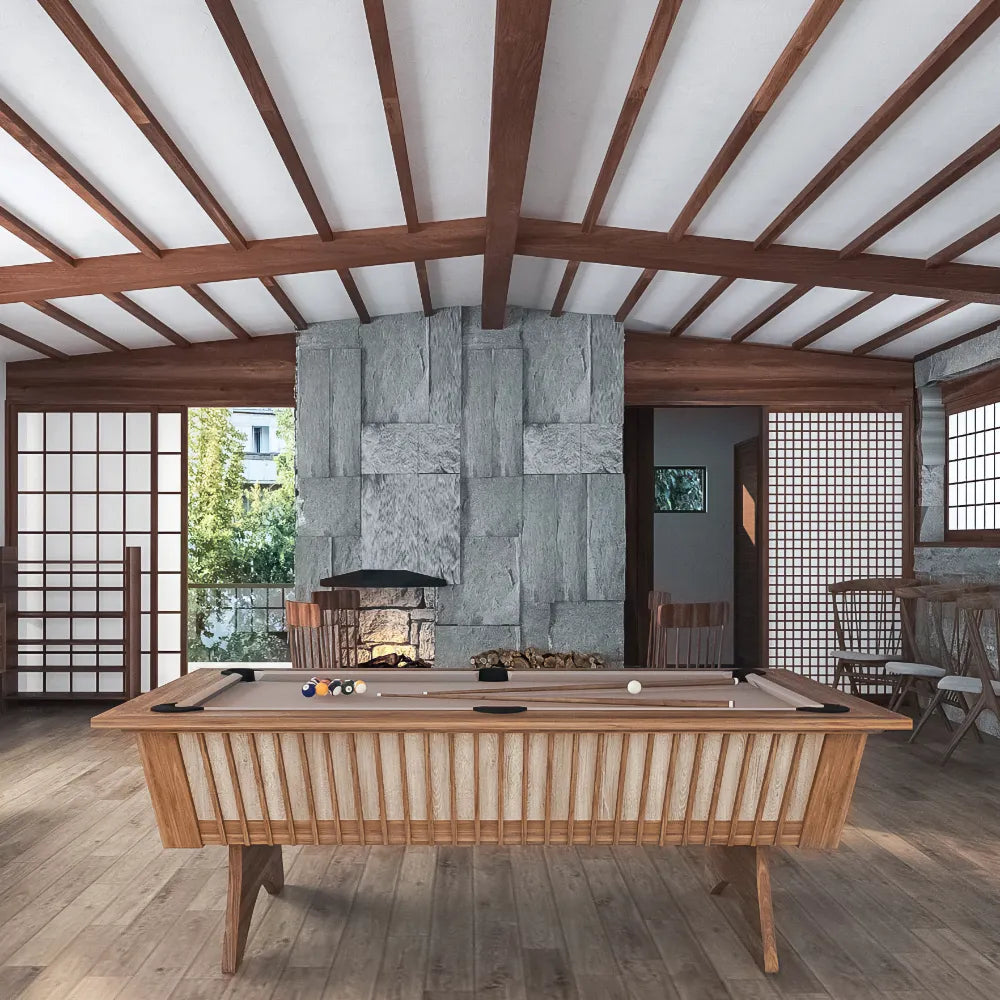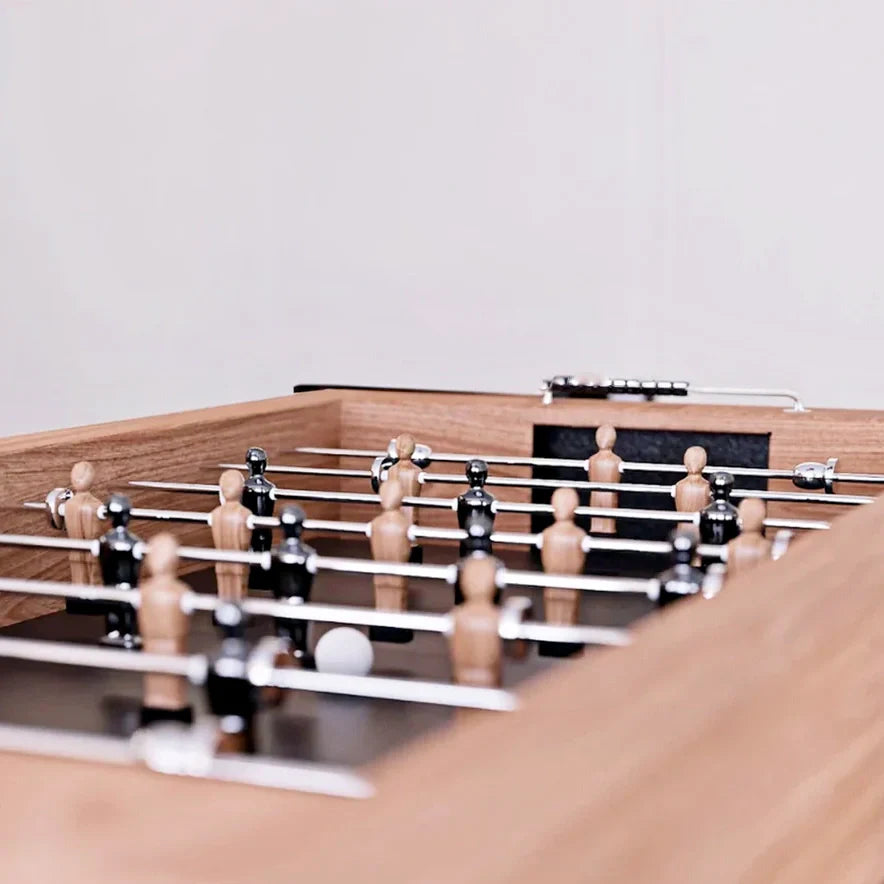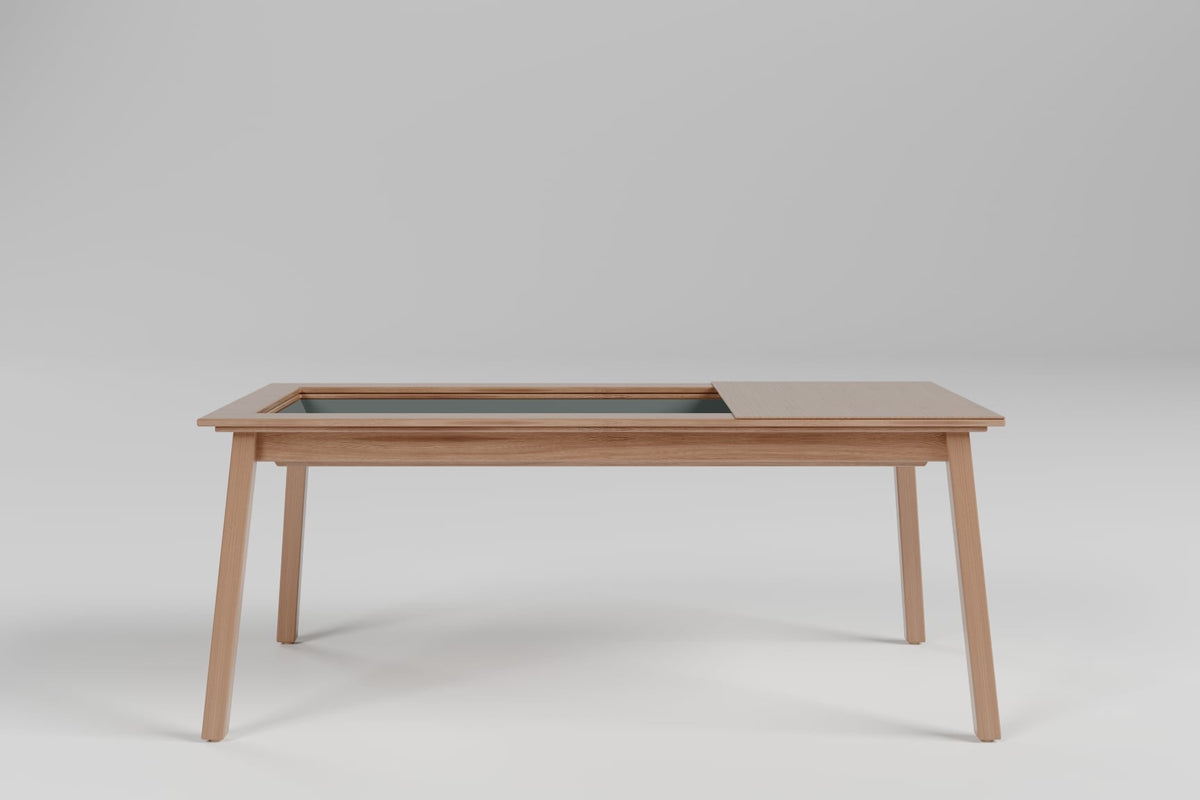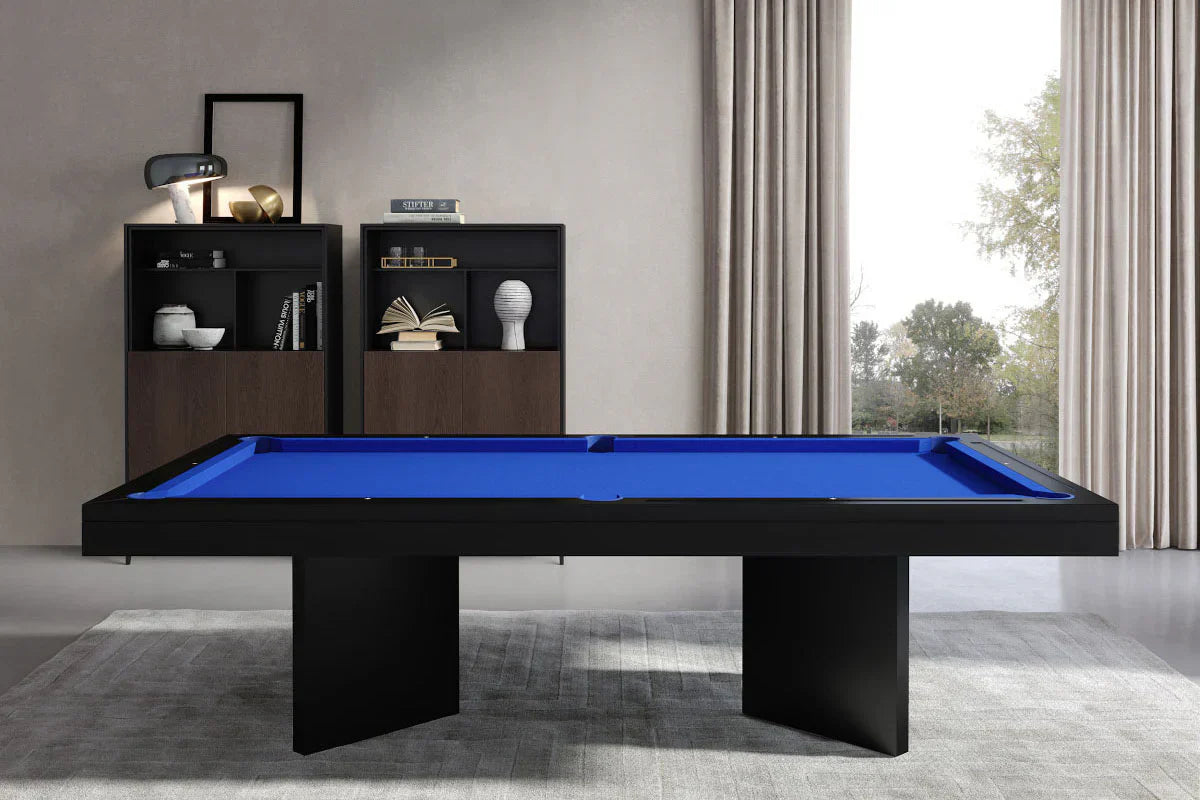So you’ve just brought a pool table into your home—welcome to the club. A pool table isn't just furniture. It’s a gathering place, a practice ground, and a serious commitment if you want it to last and play well for years.
Whether you're a casual player or diving into the game more seriously, this guide combines everything you need to know—from choosing the right setup and maintaining the playing surface, to handling cue care and racking properly.
Understand What Type of Pool Table You Have
Slate Tables: These offer the best playing surface. Heavy, level, and durable, slate is the standard in professional play.
MDF (Medium-Density Fiberboard): Lightweight and affordable, but not nearly as durable or warp-resistant as slate.
Outdoor Tables: Designed with waterproof materials. Still need a cover to last long-term.
Make Sure It’s in the Right Room
Ideal Room Size
An 8-foot table with full-size (58") cues needs about 13 ft x 17 ft of space.
Other Room Factors
- Lighting: Install a pool table light 32–36 inches above the table.
- Flooring: Hard flooring is ideal; check level more often with carpet.
- Sound: Rugs and curtains help dampen echoes.
Professional Installation Matters
Slate tables must be installed and leveled by a professional. Re-check level every 6–12 months or after moving.
Essential Table Maintenance
Felt (Cloth) Care
- Brush felt in straight lines after every few uses.
- Vacuum gently with a hose attachment.
- Chalk cues off the table to avoid excess dust.
- Keep food and drinks far away.
- Cover the table when not in use.
Pockets and Rails
- Wipe rails with a microfiber cloth; avoid harsh chemicals.
- Treat leather pockets with conditioner if needed.
- Vacuum drop pockets periodically to remove lint and dust.
Ball Cleaning
- Use warm water and mild soap to clean balls.
- Dry completely with a lint-free cloth.
Control Room Conditions
- Keep humidity between 35–50% to protect wood and felt.
- Avoid placing near heat or AC vents.
- Block direct sunlight with curtains or UV window film.
Protecting Your Investment
Use a Table Cover
- Vinyl: Budget-friendly, blocks dust.
- Canvas or leatherette: Better long-term protection.
- Hard top: Converts the table into a usable surface.
No Sitting, Climbing, or Leaning
Don’t let people (or pets) lean or sit on the table. It can damage the frame and stretch the felt.
Cue Stick and Tip Care
- Store cues vertically or in a rack—never flat or leaning.
- Shape tips regularly to avoid miscues.
- Chalk evenly and gently, off the table.
- Clean cue shafts occasionally with a damp cloth.
The Art of Cue Ball Control
Learn the basics of cue ball action:
- Follow (top spin): Cue ball keeps rolling forward after impact.
- Draw (backspin): Cue ball pulls back after contact.
- English (sidespin): Affects the cue ball’s path after rail contact.
Proper Racking Techniques
8-Ball
- Use all 15 balls.
- Place the 8-ball in the center.
- Put the 1-ball at the apex over the foot spot.
- Ensure a stripe and solid are in the back corners.
9-Ball
- Use balls 1–9 in a diamond rack.
- 1-ball at the apex, 9-ball in the center, rest random.
Etiquette Goes a Long Way
- Don’t chalk over the table.
- No slamming cues or jumping shots without skill.
- Respect turns, especially in group games.
Explore Beyond 8-Ball
- 9-Ball: Fast and aggressive.
- Straight Pool: Call-shot, strategic play.
- Cutthroat: Great for 3-player games.
- One Pocket: Highly tactical, slow-paced.
Must-Have Tools for Table Care
- Pool table brush
- Table cover
- Microfiber cloths
- Cue tip shaper
- Ball cleaner or warm water setup
- Vacuum with hose attachment
- Level or marble test tool
This Is a Journey
Expect to mess up, re-learn, and grow into the game. Your first table is more than furniture—it’s your gateway to hours of focus, fun, and finesse.





0 comments